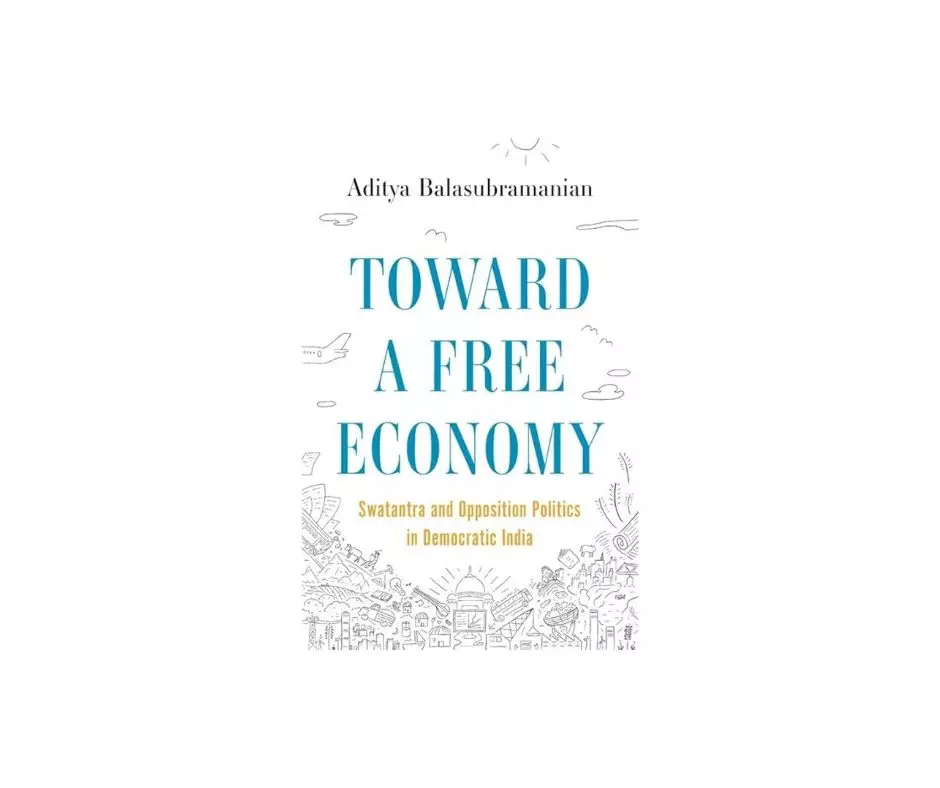Book Review | Writing India’s own history of libertarian economic thought leadership

Aditya Balasubramanian’s book Toward a Free Economy is a meticulously researched documentation of a very special, albeit short, period of India’s political history, in which a viable opposition to the then all-pervading Congress rule was envisaged and given shape to. The Swatantra Party has been described in various platforms as a party of rajas and maharajas, supported by big businesses, as well as a party of peasants, with a possible analogy to the Smallholders’ Party of Hungary, a description proffered by the party’s co-founder Minoo Masani.
While deeply researching the roots of the party and its causes/objectives, even as he keeps a creditable distance from his subjects, the author describes how Chakravarthi Rajagopalachari, the founder and patriarch of the party, had described his creation as a party that “stands for the protection of the individual citizen against the increasing trespasses of the State”.
The State was described as the prime meddler in private affairs of the citizen, interfering in personal spaces, specifically fiscal spaces, and restricting growth that would have been possible for India post-Independence, had the shackles not existed. In hindsight, these are valid arguments, though how much of the merchant class’ sentiments were shared by the people at the bottom of the pile isn’t clear.
This book also lays bare the cross currents and ideological anomalies that existed within the formative group of the Swatantra Party and states a possible reason why the party remained restricted to western and southern India and saw an untimely death.
The other libertarian policy of the party was that no official party line was developed and somehow not deemed necessary with legislators free to choose issue-based voting. That, again, seemed a somewhat elitist construct that may not have been shared or even understood by a generally illiterate and naturally argumentative populace.
The book launches off Bombay businessman Ranchoddas Lotvala and his daughter Kusum, with Ranchoddas having shed early leftist ideals and, through their library (“a space once famous for its ‘intellectual discovery and debate’”), providing “lapsed Marxists” an alternative thought.
The Lotvalas’ beliefs resonated with whatever little line the party had developed. They were in sync with Rajagopalachari’s pluralistic social path, thoughts of an economy free from domination by any one social group or the state, as well as a stress on right to property. Interestingly, during that time the right to property had the status of a fundamental right, downgraded to a constitutional right through the Constitutional 44th Amendment Act 1978. This was four years after the party shut shop.
The party’s strength possibly stemmed from Sardar Patel’s — then deputy Prime Minister — disinclination to the imposition of Central planning. Patel believed the “government’s role was (merely) to create a suitable environment for business investment”. So, instead of the planning commission, Patel had “suggested a body comprising businesspeople, economists and heads of government departments who might coordinate existing activity”.
That would be the main position of the Swatantra Party, as elucidated by the author, but what the policy proffered was untested and a mix of heavily diluted laissez faire and smallholdings. It was clear in their minds that capitalism and laissez faire were not fit for the Indian appetite, but neither were the government’s policies, as espoused by the Planning Commission.
Even when India became self-sufficient in food production, the main beneficiaries were the rich farmers; the PSUs were inefficient, India was moving away from its original identity as an agrarian economy and into mega-industrialisation, within a fast growing and almost choking bureaucracy (the control regime and the permit raj) and rampant corruption.
The gripe was about overarching control and censure. Private businesses had to strictly obey government dictum. Their growth, line of business, employment rules, profit margins and every possible aspect of activity were closely monitored and controlled within the socialist-style system. While the country invested massively in mega structures, such as steel plants, there was little incentive for small and medium sized enterprises and certainly nothing towards innovation emanating at this level. And the permit raj ensured that corruption spread like a malignancy.
Despite being in this cage of bureaucratic red tape, private enterprise managed to grow at a fast pace through the 1950s and 60s. Soon it had captured 40 per cent of all manufactured products and was employing 75 per cent of all in employ. As this number grew, the government’s apathy became even starker. The unorganised sector spread across the country, sans governmental assistance and corruption, and general depression kept pace. The author rightly points at a path-breaking play, Evam [Ebong (and)] Indrajit, by eminent playwright Badal Sircar of Kolkata that depicted what the author calls the existential angst of the urban, educated middle-class with a life of little consequence in a society and system of control.
This is a book of economic and social history which shows future possibilities, but the highly researched and eminently readable document will surely be the source of many more literary enterprises.
Toward A Free Economy: Swatantra and Opposition Politics in Democratic India
By Aditya Balasubramanian
Princeton University Press
pp. 352; Rs 799

